Wildfires, also known as forest fires, bushfires or vegetation fires are uncontrolled, quickly spreading fires that consume forests, grasslands, and other natural environments. One of nature's most powerful and destructive forces, these fires can wipe out whole landscapes, put human lives in danger, and harm ecosystems and communities for a long time. The National Interagency Fire Center (NIFC) reports that on average, 56,580 wildfires burnt 26,93,910 acres in 2023.
The World Resources Institute (WRI) estimates that wildfires burnt around 12 million hectares of land in 2023, about the size of Nicaragua.
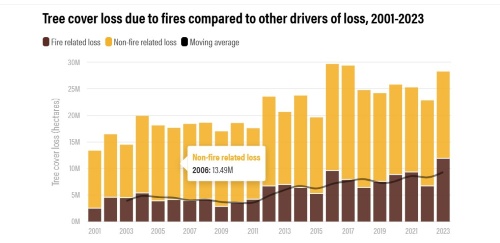
Source: World Resources Institute
This represents a 24% increase over the previous record. In Canada, extreme wildfires caused around two-thirds (65%) of the fire-driven loss of tree cover that year, making them especially destructive. Additionally, over a quarter (27%) of the total loss of tree cover worldwide was caused by these fires.
With LA witnessing wildfires and significant loss, it is essential to learn how these fires start and what are the causes behind them.
How do Wildfires Start?
Wildfires are often sparked by a combination of natural forces and human activities. The causes behind these devastating fires can be traced to both natural phenomena and human negligence or intent.
Natural Causes of Wildfires
1. Lightning Strikes
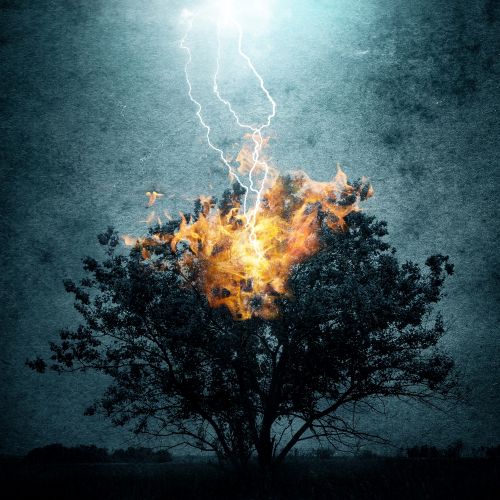
Source: Shutterstock
One of the major and frequent natural sources of wildfires is lightning. According to the MDPI, “Approximately two-thirds of the wildfires that occur in the U.S.A. are caused by lightning strikes”. These fires are common to occur particularly in hot areas. Moreover, dry vegetation is particularly vulnerable to ignition during thunderstorms. Trees, grasses, and shrubs can all catch fire due to the extreme heat produced by a lightning strike, which can swiftly turn into a wildfire.
2. Volcanic Eruptions
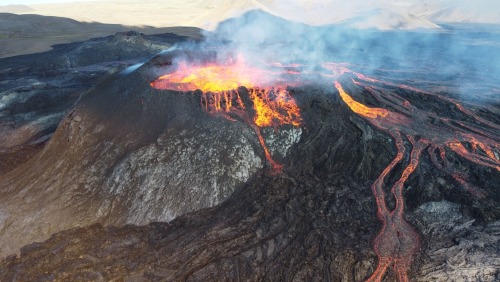
Source: Shutterstock
Although they are less common, volcanic eruptions can also ignite wildfires. Lava flows, debris, and volcanic ash are very hot and can burn surrounding vegetation. These flames can spread rapidly, especially in areas with little vegetation or during long periods of drought. For instance, a volcanic explosion in Hawaii caused wildfires that burned hundreds of acres of forest area in 2018.
3. Sparks from Rockfalls
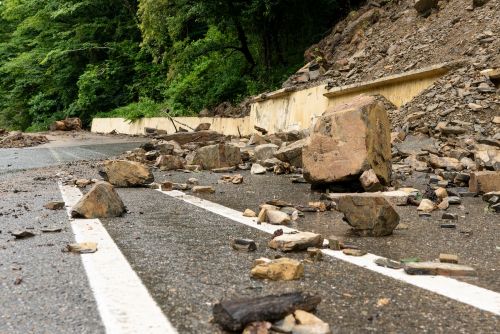
Source: Shutterstock
In dry, rocky terrains, the friction caused by falling rocks or colliding boulders can create sparks. While this is a less frequent cause of wildfires, it can still ignite dry grasses and shrubs in the immediate vicinity. The arid conditions in places like the Rocky Mountains and certain desert regions can make this a potential risk.
4. Spontaneous Combustion
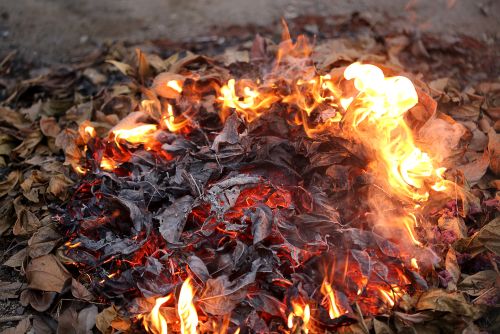
Source: Shutterstock
Organic materials like dry leaves or grass can spontaneously start a fire under certain conditions. When these materials accumulate in large quantities and heat up—especially in areas with poor ventilation—they can catch fire. This phenomenon, although rare, can occur in certain wetlands or forested areas where organic matter has built up over time.
Human-Induced Wildfires
Human activities are responsible for nearly 85% of wildfires globally, according to the National Park Service. These fires can occur as a result of negligence, reckless behaviour, or intentional actions.
1. Campfires and Outdoor Cooking
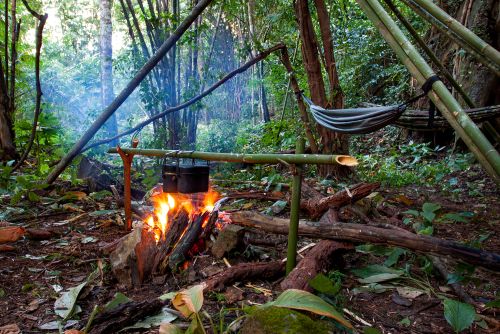
Source: Shutterstock
One major cause of wildfires is improperly extinguished campfires. In dry grass or underbrush, a tiny ember left behind can easily catch fire and grow out of control.
2. Cigarette Butts
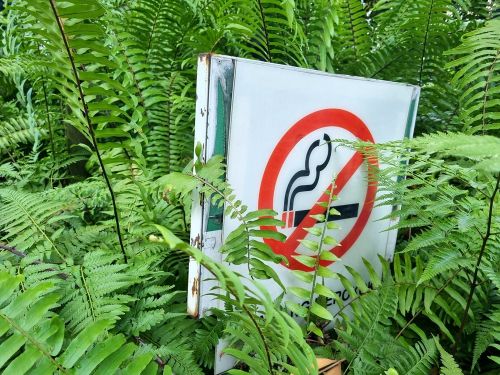
Source: Shutterstock
Another frequent cause of wildfires is discarded cigarette butts. The burning remains of a cigarette can readily ignite nearby vegetation in dry conditions. This is a common issue in places like parks and forests that see a lot of foot activity, particularly in the summer when vegetation is most dry and flammable.
3. Arson
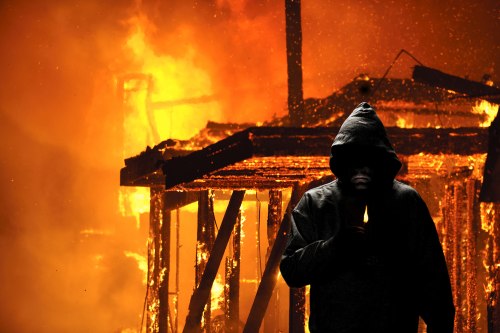
Source: Shutterstock
A large percentage of wildfires are caused by intentional arson. These arsons are caused by a variety of reasons, such as monetary gain, vandalism, or land conflicts. Arson is occasionally used to illegally remove land for farming. According to FEMA, “Arson is the leading cause of fires (267,000 annually) in the United States and the second leading cause of deaths (475) and injuries (2,000); arson causes $1.4 billion in property loss each year, 15% of wildfires in the United States are caused by arson each year.”
4. Power Lines and Electrical Equipment
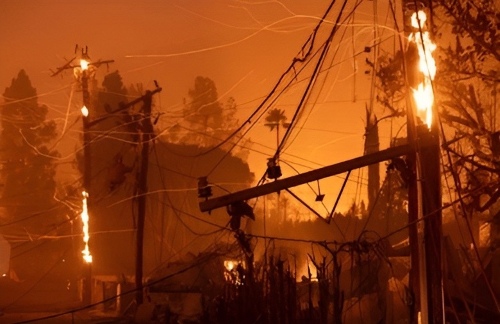
Source: Shutterstock
Wildfires can be started by damaged or downed electrical lines, especially when there is a lot of wind. Power line failure was the cause of the 2018 California Camp Fire, which turned into the state's deadliest and most destructive wildfire ever. When there is dry vegetation and strong winds during extreme weather events, such situations are more likely to occur.
5. Agricultural Practices
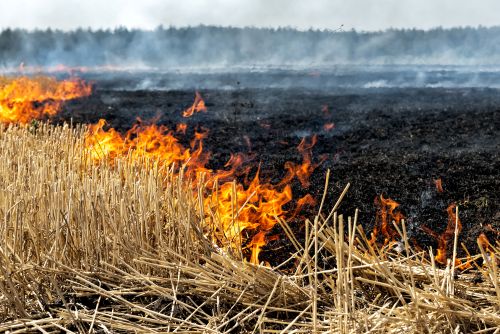
Source: Shutterstock
Wildfires can also result from specific agricultural techniques like burning crop stubble or slash-and-burn farming. These occasionally uncontrolled fires have the potential to spread to neighbouring grasslands or woodlands. The World Health Organization (WHO) claims that a large portion of wildfires in places like Southeast Asia are caused by agricultural burning.
5. Fireworks and Celebrations
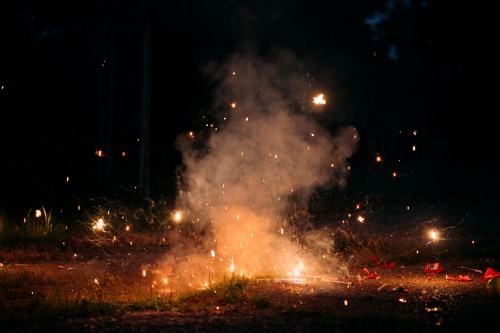
Source: Shutterstock
Fireworks and pyrotechnics used in celebrations can spark wildfires, especially in dry conditions. The use of fireworks in regions experiencing drought or heat waves increases the risk of ignition. In 2020, several wildfires in the U.S. were linked to fireworks during Fourth of July celebrations.
How do Wildfires Spread?
Fuel, weather, and geography are the main factors that affect the intensity and speed of wildfires.
Fuel Loads: An Important Aspect of the Spread of Wildfires
One of the main elements influencing the intensity and spread of a wildfire is fuel. The term "fuel load" describes the quantity of flammable vegetation, such as dry grass, trees, and shrubs, in a specific location. The fire will burn faster and more intensely if there is more fuel available.
Fuel Characteristics:
- Size and Shape: Smaller materials, such as dry grass and twigs, ignite quickly and burn faster than larger, denser logs. This is why kindling is used to start a fire—small twigs have a larger surface area relative to their volume, which makes them easier to ignite.
- Arrangement: The spacing between fuel sources also matters. When fuel is loosely arranged, it dries out faster and is more easily ignited. In contrast, densely packed fuels retain moisture and take longer to heat up.
- Moisture Content: Dry fuel burns faster, which is why wildfires are more intense during periods of drought or heat. Wet fuel is harder to ignite, which can slow the fire's progress.
As a fire spreads, it heats up the surrounding fuel, drying it out and making it more susceptible to ignition. This cycle makes it harder to contain the fire, as it rapidly consumes more material.
How is Weather Responsible for the Spread of Wildfires?
Weather plays a major role in how wildfires develop and spread. Three key weather factors—temperature, wind, and moisture are responsible for the intensity and progression of wildfires:
- Temperature: Hotter temperatures dry out vegetation, making it easier for fires to start and spread. Wildfires tend to be more active during the hottest parts of the day, often peaking in the afternoon.
- Wind: Wind is one of the most significant factors in wildfire behavior. It provides oxygen, dries out fuel, and pushes the fire across the landscape. Wind can also create "fire whirls" (similar to tornadoes), which are capable of tossing burning debris over long distances, igniting new fires. Wind-driven wildfires can spread up to 10 times faster than the ambient wind speed.
- Moisture: High humidity or precipitation can slow down a wildfire by increasing the moisture content in fuel, making it harder to ignite. Conversely, low humidity and dry conditions make wildfires more likely and more intense.
Topography: The Influence of Land Features
The geography of the land is another important and contributing factor in how wildfires spread. Fires move more quickly uphill due to the natural upward flow of smoke and heat, which preheats the fuel ahead of the fire. Steeper slopes cause fires to spread faster, as the fire's heat dries out the vegetation uphill.
Once a fire reaches the top of a slope, it may struggle to move downhill, as the fuel is not preheated in the same way. However, strong winds can sometimes counteract this, driving the fire downhill.
In conclusion, wildfires are a natural part of many ecosystems, but their increasing frequency and intensity are alarming. Both natural factors and human activities contribute to this phenomenon. By understanding these causes and adopting preventive measures, we can mitigate the impact of wildfires and protect our environment, wildlife, and communities.
Comments
All Comments (0)
Join the conversation